Xintun Village, located in Wangmo County of Qiannan Prefecture, has a beautiful natural ecology and simple folk customs. In 2018, it was rated as a national AAA tourist scenic spot. In 2020, it was selected as the second batch of provincial-level rural tourism key villages in Guizhou. In 2020, it was included in the third batch of national ethnic minority characteristic villages.
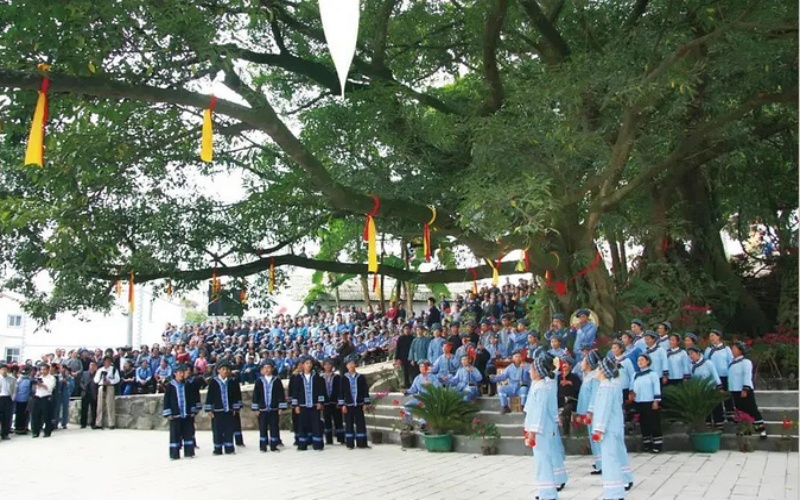
Xintun Village is a mountainous township inhabited by multiple ethnic groups, with distinct ethnic characteristics and representative regional culture in inheriting and promoting the art of "rap". Has represented the county multiple times to perform in provinces and states.
The cultural activities in Xintun Village are rich and colorful. It has received interviews and filming from multiple media outlets, including the production team of CCTV's "Rural" program, Beijing TV's "Olympic Channel" program, and Guizhou TV's "Discovering Guizhou" program, as well as special coverage activities from French tourist groups.
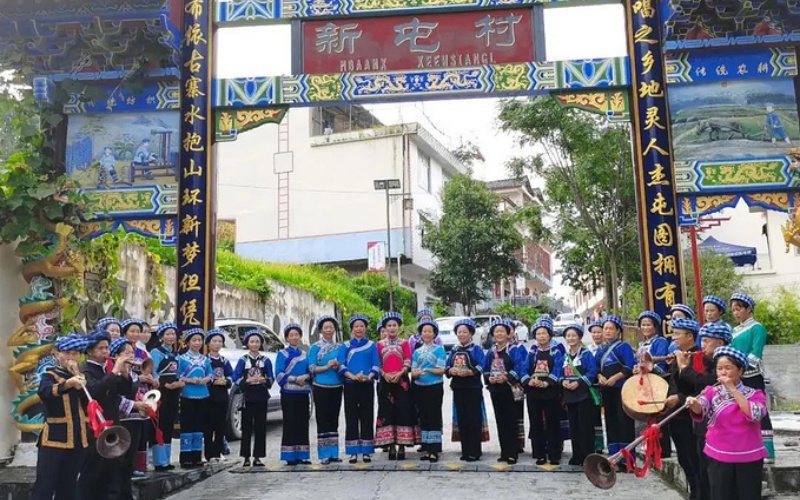
Entering Xintun, one is first attracted by the clean and tidy streets and distinctive light yellow residential buildings. The farmhouses have yellow walls and tiled roofs, and the building structure is unified. Various agricultural and living utensils made of bamboo decorate the walls and courtyards.
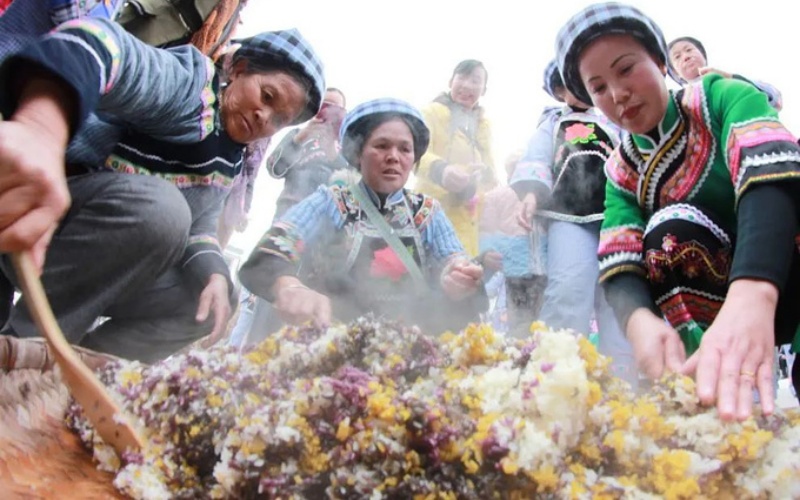
On the walls of the houses,there are ink paintings that match the village. The towering ancient trees around the village are lush and straight, and the three rivers under the village converge with green water. The pavilions, towers, and buildings in the village are lush with grass, and the gardens in the fence walls are planted with flowers and vegetables, making it a paradise on earth.
Xintun Village has a rich historical and cultural heritage, with distinct ethnic characteristics and regional cultural representativeness, and is known as the "hometown of Buyi rap art"
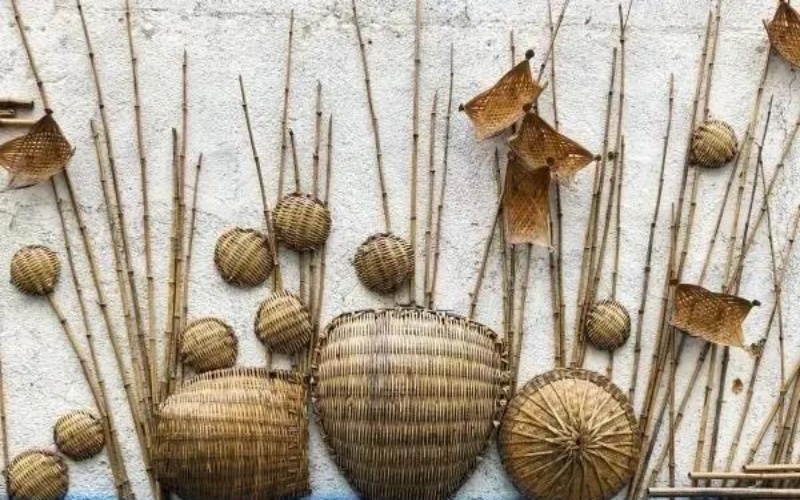
The content of the "Rap" drama is based on real rural life, which is both popular and elegant. It combines storytelling and singing, and is adapted or created from the "Xiao Xiao Guan" song segments. The metaphors are appropriate, the praise and criticism are clear, and the emotions are pure.
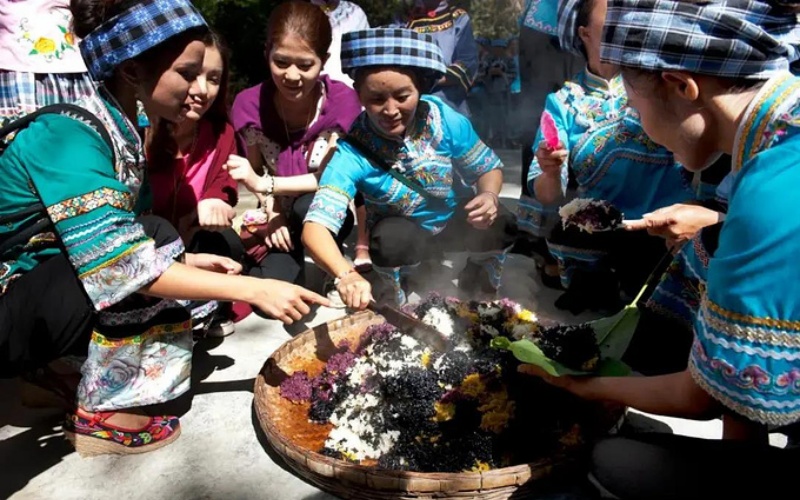
The intangible cultural heritage of Xintun Village is rich and diverse, involving various aspects such as agricultural culture, architectural culture, culinary culture, festival culture, and folk culture. Weaving, embroidery, tie dyeing, wax printing, and other handicrafts inherit exquisite skills.
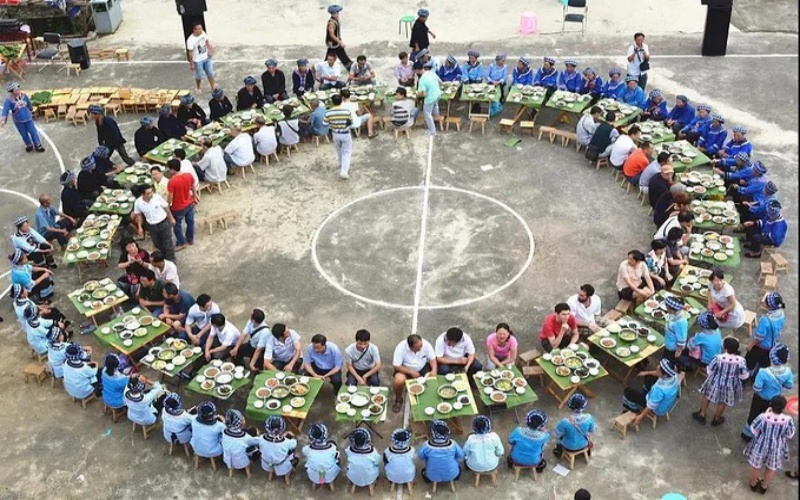
As time passes by and the imprints of time are erased, the barbarian city seems to be the silhouette of Sanglang's history. On the heavy stone walls and ancient roads, it is full of mysterious tears and historical luster.
What to eat
Fower Rice ( 花米饭)
Around the third day of the third lunar month, the Buyi people make five colored rice with flowers. Flower rice is made by dyeing high-quality glutinous rice into various colors, steaming it, and mixing and stirring it. Generally, there are colors such as black, white, red, yellow, purple, etc. Flower rice not only has bright colors, but also has a long aftertaste!
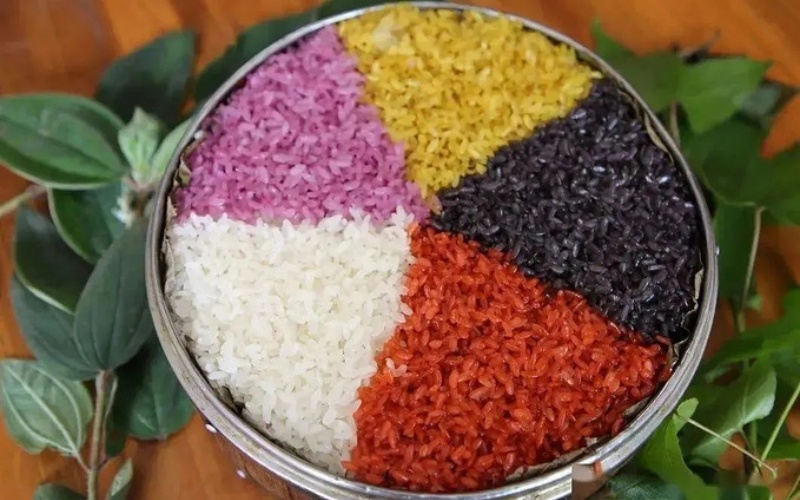
Zongzi Baba
In the customs of the Wangmo Buyi ethnic group, zongba is a sacrificial offering for ancestors during the Spring Festival every year. Using glutinous rice as the main raw material, mixed with rice beans, lard, sliced meat, minced meat, grass fruit, salt and other seasonings, wrapped with zongzi leaves, it has a unique aroma when eaten hot or cold, and its taste is better when fried or baked.
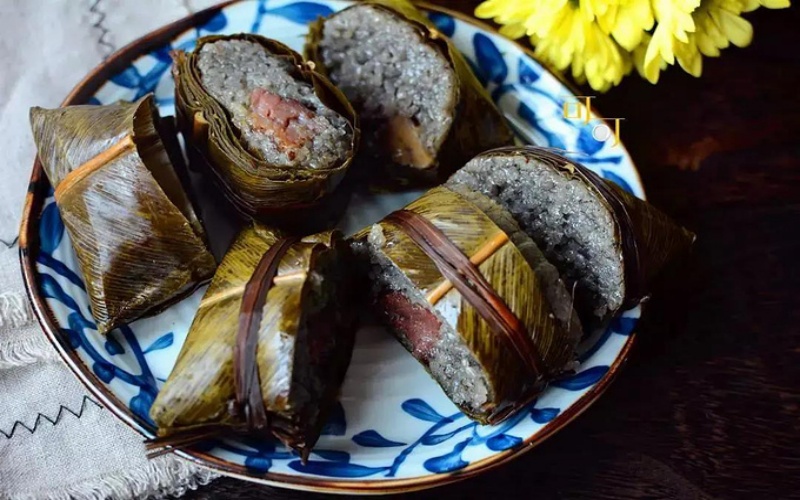
Bancheng Cake
The production of Banchen cake is very particular. It is made by blending 16 kinds of high-quality ingredients such as glutinous rice, Job's tears, white sugar, walnuts and peanut kernels, sesame seeds, wheat germ oil, etc., and is processed through nearly 30 processes including filtering dry water, stir frying over low heat, and fine powder processing.
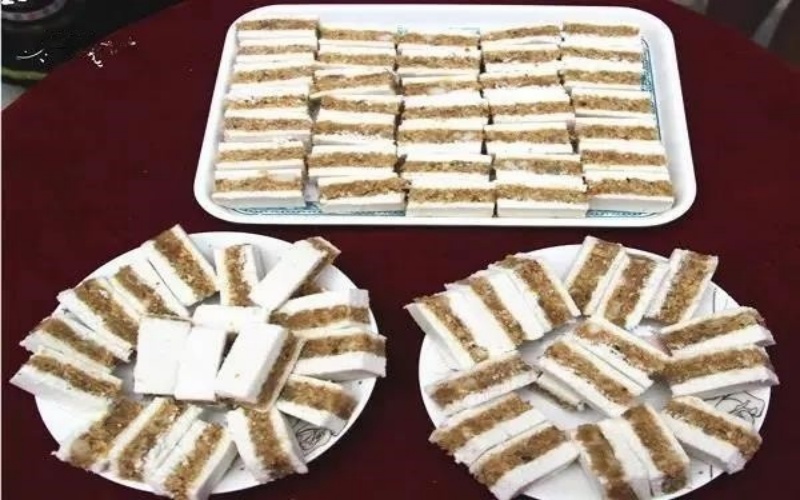
Around Xintun Village
SangLang Anicent Town
Sanglang Ancient Town is known as the first ancient town in the East, with a simple and honest folk culture. The town still retains traditional customs and festivals, such as the Buyi people's "March 3rd", "June 6th", and "Chabai Song Festival", the Miao people's "February 2nd" Homecoming Festival and Flower Picking Festival, and the Yi people's Torch Festival. Each festival has its own unique characteristics.
As the wind and frost of time pass by, the imprints of time are erased. The barbarian city is the silhouette of Sanglang's history. The heavy stone walls and ancient roads are filled with mysterious tears and historical luster.
Beipanjiang National Wetland Park
It is located in Wangmo County. Covering three counties of Zhenfeng, Guanling and Zhenning, the rivers within the wetland park belong to the Beipan River system of the the Pearl River basin, with a drainage area of about 60000 square kilometers. The wetland landscape in the park is diverse, with unique natural scenery and cultural landscape.... More
Travel Tips
Add: Wangmo county, Qianxinan Prefecture of Guizhou Province
Opening Hours: all day
Entrance Fees: FREE
